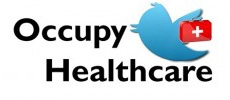Today’s post by Dr. Kathleen Hoffman, whose blog is found here, focuses on issues of patient safety:
The Institute of Medicine (IOM) recently published a substantial report on the healthcare system in the US. According to the report, in the US 1/3 of patients are currently harmed during their stay at a hospital. These harms are called Hospital Acquired Conditions (HACs).
In a 2012 article in the Journal of Health Care Finance, Nero, Lipp and Callahan analyzed 2007-2008 patient data from the New York State Department of Health’s Statewide Planning and Research Cooperative System. Of the 4,853,900 patients whose discharge information was included in the analysis, the most frequent hospital acquired conditions was bedsores, also known as pressure sores or the technical name “decubitus ulcers.” Their annual cost estimate for New York alone was nearly $680 million and 376,546 days of hospital care.
For the US, estimates of cost range between $6 and $15 billion annually (Markova & Mostow, 2012). The costs in human suffering are also significant. When Ailman et al (1999) conducted a comparison of patients who developed bedsores and those who had not; they found significant increases in hospital-acquired infections (45.9% vs 20.1%) and other complications. Hospital costs and length of stay were greater for those who developed these ulcers.
My interest in decubiti is personal. In the 1980’s and 1990’s my mother worked part-time in a hospital in North Carolina in quality control. When researching cost and quality issues, she found that a significant amount of money and time was spent on a problem that patients were getting in the hospital, that was preventable, that was painful and could be life threatening. This was the problem of bedsores.
She spent an enormous amount of time trying to educate the hospital administration, nursing staff and fellow physicians in the need to prevent and treat bedsores. She made some inroads: the hospital hired a skin care expert who trained the staff. But in the end, budget cuts reduced or eliminated jobs in quality control at that hospital.
One of the saddest and most disturbing ironies of her story is that, in 1999, when she was a patient, dying of metastatic breast cancer in that hospital, she got a bedsore. Because training had been discontinued, the nursing staff did not know how to prevent this ulcer from occurring, nor did they know how to treat it. Thankfully, my mother was still able to help my sisters and I find the skin care expert that had been hired previously. Through that expert, we got the type of dressing that mother needed to promote healing. We took over, turning mother, changing her dressing, giving her bed baths and doing “bedpan duty”. We were there with her, night and day, for two months.
There was a patient in the next room over who had no family. He also had a bedsore and we could hear him crying, suffering from the treatment he received. My mother’s bedsore healed up as we took care of her, despite her cancer. We showed the nurses what we were doing and asked if they could use the dressing on the man next door. Sadly, we were told that if his physician did not order the dressing, there was nothing that could be done for him.
The name of the IOM’s report is “Best Care at Lower Cost: The Path to Continuously Learning Health Care in America.” In my view, continuously learning healthcare means that just because there is improvement in quality, efforts to maintain quality control cannot be stopped. It means continuous training and monitoring. It means dealing with this very real problem. Getting bedsores is preventable. Patients in hospitals and nursing homes do not have to acquire these life-threatening ulcers. But it requires awareness, intense devotion, continuous monitoring and education. It also requires enough people. People who are willing and able to do the physical work, people who have the energy, time and devotion to care and people in power who remember that the patient in that hospital bed could be their mother, sister, brother, father, child, aunt, uncle, grandparent or friend. Patient safety must be at the center of all the care we provide and it is imperative that we actively work to prevent avoidable complications in care.
References:
Ailman, R., Goode, P., Burst, N., Bartolucci, A., & Thomas, D. (1999). Pressure ulcers, hospital complications, and disease severity: impact on hospital costs and length of stay. Advances in Wound Care. 12(1):22-30.
Markova, A. & Mostow, E. (2012). US skin disease assessment: ulcer and wound care. Dermatological Clinics. 30(1):107-11, ix.
Nero, D., Lipp, M. & Callahan, M. (2012). The financial impact of hospital-acquired conditions. Journal of Health Care Finance. 38(3):40-9.
http://www.iom.edu/Reports/2012/Best-Care-at-Lower-Cost-The-Path-to-Continuously-Learning-Health-Care-in-America.aspx
